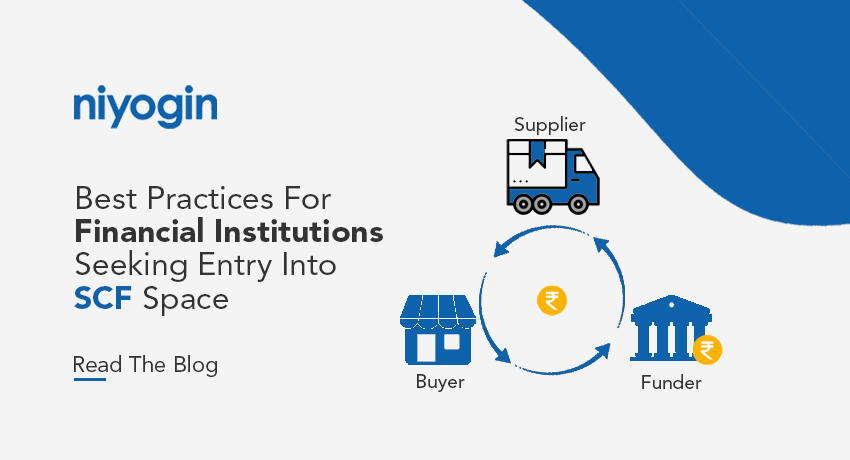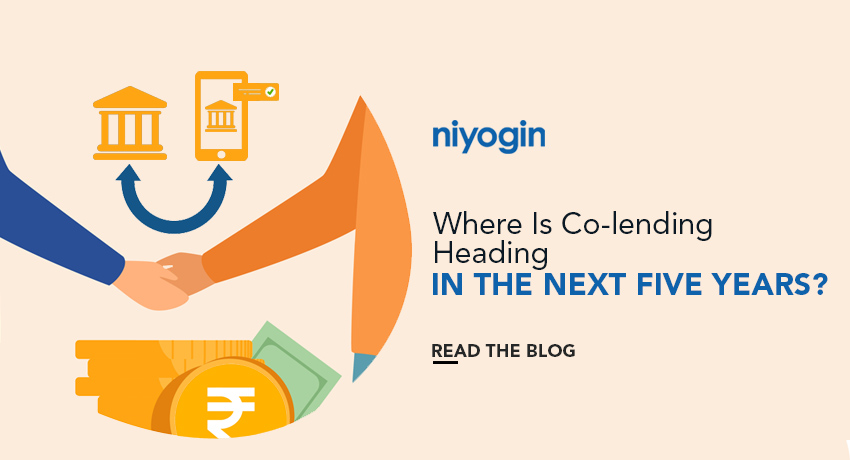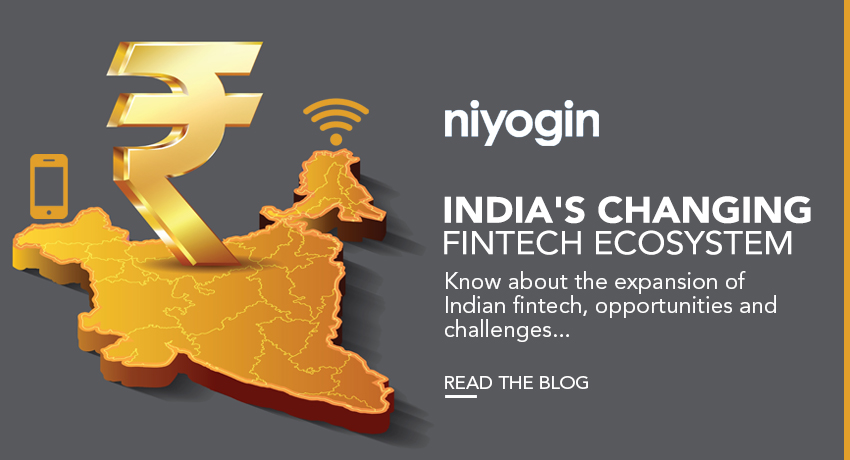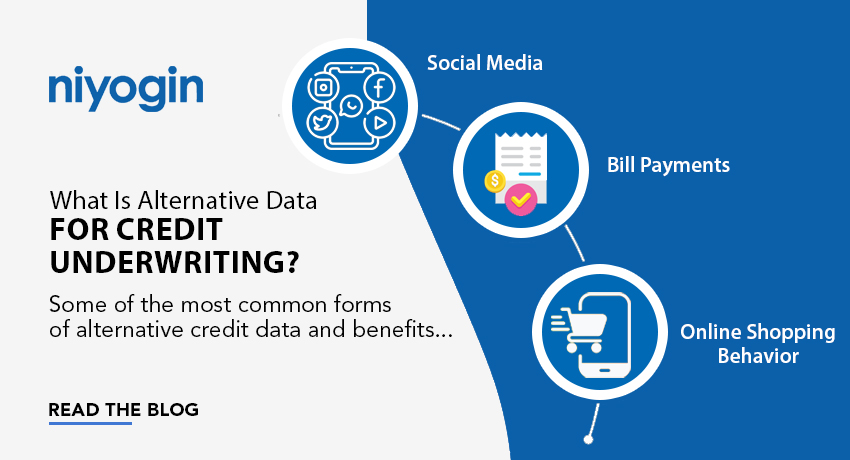With the introduction of new technology and the government’s aim for a cashless economy, digital payments in India have seen a remarkable transition in recent years. The Indian digital payment ecosystem is rapidly expanding, providing millions with ease, security, and financial inclusion. Here are a few trends, statistics, and examples that illustrate the evolving payment landscape. Mobile Payments Revolution The emergence of mobile payments has been one of the most significant transformations in India’s digital payment landscape. Mobile wallets such as Paytm, Google Pay, and PhonePe have become household names. The volume of PPI payments in India in fiscal year 2022 accounted for approximately 6.58 billion which included mobile wallets. The growing use of mobile payments has made transactions more accessible and convenient for both urban and rural communities. Unified Payments Interface (UPI) UPI has emerged as a game changer in India’s digital payment ecosystem. Developed by the National Payments Corporation of India (NPCI), it allows users to transfer money quickly from their bank accounts to any other bank account, 24 hours a day, seven days a week. In June 2023, the UPI payments system processed 9.34 billion transactions worth 14.75 lakh crore. The success of UPI has spurred other countries to investigate similar systems, underscoring India’s pioneering role in digital money. QR Code Payments QR code payments are just another innovation that has changed the way people make payments. QR codes have been used for payment by businesses of various kinds, from street vendors to large organizations. Customers simply scan a QR code, enter the amount, and finish the transaction. According to Ernst & Young, QR code payments will account for 9.4% of all digital payments by 2025. This technology has made digital payments available to people who do not have cell phones or internet connections. Financial Inclusion Digital payments have played a critical role in extending financial services to India’s unbanked and underbanked communities. The Jan Dhan Yojana, a government project, has encouraged financial inclusion by providing bank accounts for millions of people. The Reserve Bank of India’s financial inclusion index (FI) increased from 56.4% to 60.1% in 2022–23 (April–March) due to improvements in usage and quality dimensions, a substantial improvement over prior years. Gig Economy and E-Commerce The rise of e-commerce platforms and the gig economy have contributed to the increase in digital payments. Amazon and Flipkart, as well as ride-sharing services Uber and Ola, have integrated digital payment systems into their apps, making it easier for consumers and gig workers to interact. This pattern is predicted to continue, with the Indian e-commerce business expected to reach $120 billion by 2025. Regulatory Framework India’s government and regulatory organizations have been engaged in building a favourable climate for digital payments. Initiatives such as the “Digital India” campaign, Aadhaar-based e-KYC, and the implementation of the Goods and Services Tax (GST) have streamlined the digital payment ecosystem, making it more secure and transparent. The future of digital payments in India looks bright, with a focus on innovation, convenience, and financial inclusion. As more Indians accept digital payments, the landscape is poised to evolve, generating opportunities for both businesses and consumers. With a population of over a billion people, India’s digital payment revolution has the potential to set a global standard for digital finance.
Month: November 2023
Best Practices for Financial Institutions Seeking Entry into SCF Space
Globally, supply chain finance (SCF) remains an untapped market. According to McKinsey, more than 80% of eligible assets do not benefit from working capital finance. Even the remaining assets are undercapitalized. Digital usage has facilitated changes in MSME financing, increasing the accessibility and availability of SCF. SCF benefits corporate purchasers by securing inventory with extended payment terms, and suppliers can gain security for forward orders. Banks and NBFCs providing SCF enjoy recurring transaction volumes that allow them to push more capital market products. The RBI has implemented a number of efforts to encourage SCF growth in order to assist MSMEs. The Trade Receivables Discounting System (TReDS) and Account Aggregator (AA) frameworks integrate collected financial data to promote transparency while protecting privacy. This enables providers and buyers to use numerous financing choices in a seamless manner. SCF’s Hybrid Fintech Strategy Banks continue to struggle with SCF, owing primarily to the traditional approach. Cloud computing, artificial intelligence, machine learning, and blockchain approaches can all help financial institutions strengthen their fintech strategy. Banks must devote more time and resources to SCF, owing to the information asymmetry between SMEs and financial institutions. As a result, the priority must be to ensure consistent operations while strengthening security. Legal Compliance Fintech technologies will assist financial institutions in reinforcing legal compliance. Furthermore, these banks and non-banks should carefully consider their strategies in light of competition activities. In some circumstances, a cautious approach may be appropriate. An aggressive strategy will aid in capitalizing on the market’s potential. However, the fintech strategy should guarantee that risk tolerance is determined correctly. Decentralized Technology When new options are investigated, technology should be used in such a way that existing customers are maintained. Fintech entrepreneurs can construct decentralized blockchain platforms with well-researched business strategies and suitable partners to increase trust among SCF players. Security Financial institutions’ major priority is security. The fintech platform must provide traceable transaction records and ensure trustworthy data storage. Integration More attention should be paid to integrating legacy systems and new fintech platforms so that the SCF platform does not become more complex. Banks can leverage the co-lending model to issue loans while offloading operational costs to NBFCs, which already thrive at exploiting technology APIs. SCF at the highest level Lending banks should use a deep-tier SCF approach to help MSMEs avoid supply chain constraints. This strategy will aid in the funding of smaller suppliers, who serve as the backbone of the supply chain ecosystem. AI and ML automation Firms in need of capital and lending banks can be more precisely matched by applying ML and AI models on TReDS platforms. To eliminate duplicating funding, centralized data storage and access should also become required. Currently, corporations launch SCF programs in collaboration with banks. Multi-funder solutions that bring together multiple financial institutions will boost SCF resilience in the future. AI-powered fintech solutions enable banks to better analyze credit health for modern credit ratings. According to IBEF, more than 70% of MSMEs require working capital loans; SCF can help these businesses grow by providing a suitable funding solution. Once SCF is established, those in need of cash help can fulfill their demand in a matter of hours, allowing the business to spread.
Where is Co-lending heading in the Next Five Years?
The Reserve Bank of India (RBI) announced rules on co-lending by banks and non-bank financial companies (NBFCs) to priority sectors. The primary goal of the revised scheme, renamed “Co-Lending Model” (CLM), is to increase credit flow to the unserved and underserved sectors of the economy and make funds available to the ultimate beneficiary at an affordable cost, taking into account the lower cost of funds from banks and the greater reach of NBFCs. How did co-lending grow? In 2020, the capacity of MSMEs plummeted from 75% to 13%, with around 69% of MSMEs unable to survive for more than 3 months. This was the year the RBI authorized banks to partner with NBFCs through co-lending. The funds were distributed 80-20 in this case, with banks providing the vast majority of the funds. This agreement simplifies the loan process for developing businesses and MSMEs. Benefits of co-lending Co-lending in the financial services industry provides several benefits to banks, NBFCs, and consumers. To Banks Co-lending allows banks to extend their credit to key sectors. Banks can benefit from NBFCs’ experience and reach in specific market niches by cooperating with them. Allows banks to benefit from product developments and lower interest rates, thereby extending their lending portfolio. Assists banks in meeting regulatory criteria such as priority sector lending standards. Allows banks to expand their presence in underdeveloped areas by bridging the credit gap and providing financial services to potential consumers. To NBFCs NBFCs might use their expertise in particular sectors to target underserved customers. By collaborating with banks, NBFCs have access to lower-cost capital and a larger customer base. This enables NBFCs to offer attractive interest rates and customized loan solutions, increasing credit flow to priority sectors and boosting financial inclusion initiatives. The technical interventions and digital penetration of their partner banks can assist NBFCs. Co-lending arrangements enable NBFCs to maximize their potential consumer reach while also contributing to the market’s credit deficit. To customers This agreement benefits consumers immensely, especially underserved clients who may have restricted access to finance. You can get a variety of loan products and enjoy low-interest rates. The process is speedier since it shortens the time between loan approvals and payouts. It is also critical to guaranteeing loan availability in underrepresented industries and rural locations. Allows small enterprises and individuals to obtain low-cost financing. Future of Co-lending: A key tool for economic growth According to recent trends and co-lending targets, the peak of co-lending is still to come. The RBI launched co-lending to increase financial flow to priority industries, which are SMEs in India. As the Indian SME market is expected to be worth $300–400 billion by 2025, co-lending is the way to go in order to ensure credit access to these growing enterprises and, as a result, aim to unlock a trillion-dollar opportunity in terms of digital lending. Finally, the co-lending strategy could solve the country’s multi-trillion-dollar liquidity problem. The process was facilitated by the thriving Indian fintech industry. The highly prospective and good results of co-lending have made it an appealing choice for banks, NBFCs, and large-scale investors alike. The market for digital lending platforms is expected to reach USD 26.6 billion by 2028. And, with increasing innovation in the field of fintech and artificial intelligence, the expansion of finance alternatives in unanticipated ways is still to come.
Understanding the Psychology of Financial Decision-Making
Money greatly influences our lives, influencing not just our daily decisions but also our long-term objectives and aspirations. Whether saving for retirement, investing in stocks, or making a large purchase, our financial decisions are firmly based on our psyche. Behavioural economics has shed light on the many cognitive biases and emotional aspects that influence financial decisions. Understanding the psychology of financial decision-making can help individuals make better financial decisions and more effectively navigate the complex world of money. This article explores various factors impacting the ability to make financial decisions effectively: Emotional determinants Emotions play an important part in financial decision-making. Many of our financial decisions are motivated by emotions such as fear, greed, and anxiety. Understanding these emotional triggers is critical for making sensible decisions. For example, instead of cutting their losses, investors may hold onto losing equities for longer than necessary in the hope of breaking even. People tend to overestimate their expertise and abilities, which can lead to risky investing decisions. Greed can push people to seek huge gains without understanding the risks involved. Cognitive Biases Cognitive biases are regular patterns of judgmental deviance from the norm or reason. They are frequently at the core of poor financial decisions. These include: Confirmation bias: This bias causes people to seek out information that confirms their existing opinions or conclusions while ignoring contradictory information. When making financial decisions, people may hunt for data that supports their preferred results. Anchoring: This bias happens when people make decisions based mainly on the first piece of information they encounter (the “anchor”). In a financial environment, this might lead to investment decisions being made based on early price information. Herd Mentality Social and peer pressure frequently influence our financial decisions. Many people base their financial decisions on what they consider to be the societal norm, or they are swayed by friends and relatives. Even if the decision is not in one’s best financial interests, this might lead to conformity and herd behaviour. Understanding Behavioral economics Mental accounting is a notion in which people treat multiple pots of money differently. For example, someone may be more willing to spend a windfall bonus on a luxury item than their regular salary. Understanding this notion is critical for making sound financial decisions. Time Preferences Individuals differ in their temporal preferences, which is the degree to which they prioritize immediate rewards over future ones. Those with high temporal preferences prioritize instant gratification, which can lead to impulsive spending and bad saving practices. Recognizing your personal time preferences can help you make better financial decisions. Prospect Theory Prospect theory, developed by psychologists Daniel Kahneman and Amos Tversky, proposes that humans evaluate future events based on perceived rewards and costs rather than final states. Understanding this notion can help people frame their financial decisions more effectively. To summarize, the psychology of financial decision-making is a complicated and multidimensional area. Financial literacy, self-awareness, and the ability to think critically about money are vital tools for successfully navigating the financial world. Furthermore, engaging with financial professionals and seeking assistance can assist individuals in making solid financial decisions that are consistent with their long-term objectives and desires.
The Role of Financial Planning in the Digital Age
Financial planning has always been vital, but it takes on new dimensions and relevance in the digital age. Consider a world in which utilizing cutting-edge technologies and a multitude of financial resources makes planning your finances not only manageable but also remarkably convenient. Let us examine the reasons why financial planning is critical in the digital age. Access to Information, at your fingertips You can access your bank accounts, monitor balances, manage expenses, and assess investments with just a few touches on your smartphone. Technology has enabled you to have real-time information about your finances, allowing you to make informed decisions on the fly. Automation made simple Technology has resulted in a plethora of financial planning tools and apps that can help streamline the planning process. These tools can assist with budgeting, investment management, and even tax preparation. A financial plan can help you decide which instruments are best suited to your needs. Advanced security Security measures grow alongside technology. To safeguard your sensitive information, financial institutions and fintech firms invest extensively in cybersecurity. Your financial data is safer than ever before thanks to encryption, multi-factor authentication, and biometric identification. Furthermore, technology allows you to actively monitor your accounts for any suspicious activity, adding an additional degree of security. Economic Uncertainty The digital era has made the financial world more linked and worldwide. Economic changes in one section of the world can have an influence on your investments or job security. A financial plan can help you weather economic uncertainty by diversifying your investments and creating an emergency fund. Retirement Planning With the shift away from traditional pension systems and the emergence of self-directed retirement accounts, having a retirement financial plan is critical. This plan can assist you in determining how much you need to save, where to invest, and how to manage your retirement assets. Tax efficiency Financial transactions in the digital age frequently have tax ramifications. By making informed judgements regarding investments, deductions, and credits, a well-designed financial plan can assist you in minimizing tax bills. Estate Planning Estate planning should take into account digital assets such as social media accounts, online bank accounts, and cryptocurrency holdings. A financial plan can assist you in organizing and passing on these assets to your heirs. Goal Setting and Monitoring Financial objectives are easier to develop and track in the digital era. Online tools can assist you in tracking your development in real-time. A financial plan serves as a road map for setting and achieving these objectives. Behavioural Finance The digital age has also brought behavioural finance into the picture. The ease of trading and continual access to financial news might lead to rash actions. A financial plan can operate as a discipline to counterbalance emotional decisions and keep you on target. To summarize, financial planning is more crucial than ever in the digital age due to the increased complexity and potential in the financial world. It is equally important to emphasize the need to maintain financial literacy in this rapidly changing world. It assists individuals in making informed decisions, adapting to changing circumstances, and securing their financial future in a world where digital technology plays a vital role in all aspects of finance.
India’s Changing Fintech Ecosystem
In recent years, India’s fintech ecosystem has undergone a spectacular transition, revolutionizing how financial services are accessed and delivered. The convergence of technology, shifting customer tastes, and supportive legislative actions have resulted in a dynamic and diverse fintech ecosystem. From payments and loans to wealth management and insurance, the industry’s rapid expansion has not only boosted financial inclusion but also paved the way for creative solutions catering to a wide range of customers. The emergence of fintech in India can be attributed to a number of elements coming together. One of the key motivators has been the phenomenal growth of smartphones and internet connectivity, particularly in rural areas. This digital flow has produced a massive client base with access to digital financial services. Digital payments and Remittances With the launch of the Unified Payments Interface (UPI), India’s digital payments market has undergone a seismic upheaval. UPI has streamlined peer-to-peer transactions, allowing for quick and smooth money transfers. This innovation has not only reduced reliance on cash but has also accelerated the adoption of digital wallets and mobile banking apps. Furthermore, the government’s demonetization campaign in 2016 served as a spark, encouraging more individuals and companies to accept digital payments. Online Lending India’s ancient banking system frequently denied formal credit to a large segment of the population. Fintech platforms filled this void with novel loan strategies. These platforms analyze creditworthiness and distribute loans quickly by leveraging alternative data sources and smart analytics, making lending available to both individuals and small businesses. Investment and Wealth Management Fintech has democratized wealth management by giving consumers platforms to invest in stocks, mutual funds, and other financial instruments. Robo-advisors have gained popularity by providing algorithm-driven investing recommendations suited to individual risk profiles. This trend has made it easier and less expensive for regular investors to participate in the capital markets. Insurtech The insurance industry has also been transformed by fintech. Insurtech businesses use data analytics, artificial intelligence, and IoT devices to customize insurance policies, speed claim processing, and improve customer experience. This has made insurance products more accessible, inexpensive, and responsive to customer needs. Challenges and Opportunities Despite its rapid growth, the Indian fintech ecosystem faces certain challenges. Data security and privacy concerns, regulatory uncertainties, and the need for constant innovation are some of the hurdles that industry players must navigate. Additionally, ensuring financial literacy and digital literacy among the masses remains critical to harnessing the full potential of fintech. However, the possibilities are numerous. The government’s “Digital India” program and initiatives such as the “Jan Dhan Yojana” have paved the way for a financially egalitarian digital environment. Collaborations between established financial institutions and fintech firms can help deliver more comprehensive and efficient services by using each other’s capabilities. Regulatory Outlook India’s regulatory organizations have taken an aggressive stance towards fintech. The Reserve Bank of India (RBI) has implemented policies to encourage innovation while maintaining financial stability. The regulatory framework allows financial firms to test their ideas in a controlled environment, stimulating innovation while limiting risks. Furthermore, the RBI’s rules on digital KYC and data localization indicate the authorities’ commitment to balancing innovation and security. India’s fintech sector has grown from a niche market to a significant force altering the country’s financial environment. The convergence of technology, creativity, and regulatory support has enabled fintech to overcome gaps, increase financial inclusion, and improve the efficiency of financial services. As the ecosystem matures, collaboration, innovation, and regulatory vigilance will be the cornerstones of its continuous growth, ultimately leading to a more inclusive and digitized financial future for India.
What Is Alternative Data for Credit Underwriting, and How Your Lenders Gain Access to It?
Banks, NBFCs, and other financial organizations in the lending business use credit underwriting to assess a borrower’s risk profile. However, using alternative data to evaluate creditworthiness can greatly improve credit assessment accuracy, especially for individuals and enterprises with limited or unusual credit histories. Alternative credit underwriting data refers to information not typically used in the traditional credit underwriting process. This can include data from rental payments, telecom and mobile data, online shopping behavior, utility payments, social media activity, public records, etc. The use of alternative data in credit underwriting is becoming increasingly popular as lenders look for new ways to assess the creditworthiness of potential borrowers. This is known as alternative credit data, which can include information from various sources beyond the traditional credit bureaus. Some of the most common forms of alternative credit data used by lenders include: Alternative Financial Services Data This data includes information on consumers’ use of small installment loans, single-payment loans, point-of-sale financing, auto title loans, and rent-to-own agreements. It can provide information about a consumer’s payment history and creditworthiness. Consumer Permission Data With a consumer’s agreement, lenders can access transactional and account-level data from financial accounts to better estimate income, assets, and cash flow. This information can also provide insight into payment history on non-traditional accounts such as utilities, cell phones, and streaming services. Rental Payment History Property managers, electronic rent payment providers, and rent collection firms can all share information about consumers’ rent payment history and lease terms. Full-File Public Records Public records at the local and state levels can provide information on a consumer’s professional and occupational licenses, education, property deeds, and address history. Data on Buy Now, Pay Later (BNPL) Payment and return history, as well as upcoming planned payments, can be displayed in BNPL trade line and account data. This information can provide insight into a consumer’s creditworthiness, which may become even more relevant as consumers increasingly use this new sort of point-of-sale financing. Benefits of Using Alternative Data The use of alternative data provides a more holistic view of a borrower’s financial situation and helps lenders make more informed decisions. Alternative data helps lenders reach a wider pool of potential borrowers. Alternative data can be handy for borrowers with limited credit history or credit problems in the past. The use of alternative data helps lenders reduce fraud and risk. Alternative data can be used to verify the information provided by borrowers. With the use of alternative data, lenders can assess a borrower’s creditworthiness more efficiently and cost-effectively. Lenders can use alternative data to offer personalized loan products to borrowers. Alternative data can be used to identify new market segments and opportunities for lending. Alternative data helps lenders stay competitive in a rapidly changing lending environment. Gaining Access to Alternative Data Through partnerships with data providers These lenders collect and analyze data from various sources, including social media accounts, mobile phone usage, and online shopping behaviour. They then package this data and sell it to lenders, who can use it to make more informed lending decisions. By using specialized software that extracts data from online sources This specialized software can collect data from various sources, including social media accounts, mobile phone usage, and online shopping behaviour. Lenders can then use this data to assess the creditworthiness of potential borrowers. Lenders may use customer-permission data. Some customers agree to share data with the lender to improve their creditworthiness. For example, a customer may give a lender permission to access their online banking information, which can provide insight into the customer’s spending habits and income. This data can be used to make more informed lending decisions. As technology advances, we should expect to see more alternative data sources employed in credit underwriting. However, lenders must carefully weigh the dangers and benefits of using alternative data and guarantee that it is used ethically and responsibly.
Alternative Finance Instruments: How Do They Help SMEs Grow?
Alternate financing describes a category of financing products that includes venture capital, invoice finance, cash flow loans, and debts. In India, such solutions are now primarily favoured by SMEs and startups. This pattern is a component of the broader drive towards financial inclusion, which aims to increase access to formal banking institutions for more individuals. According to the World Bank, financial inclusion is ensuring that companies have access to practical, reasonably priced financial solutions that satisfy their needs in an ethical and sustainable manner.India accounts for around 81.3% of the South Asian market. By 2030, digital lending in India is estimated to reach $1.3 trillion. Artificial intelligence is used by digital lenders to analyze creditworthiness, allowing these fintech firms to reach underserved populations. National digitization activities also contribute to the expansion of alternative financing. The Rise of Alternative Financing Start-ups and SMEs must adapt to the increased requirement for remote working as a result of the pandemic. Due to the requirement for scaling, SMEs sought alternative funding sources. With the advancement of technology and the advent of artificial intelligence, organizations continually require financial resources to compete in today’s market. This growth in innovation has always resulted in a diversity of finance strategies to assist SMEs. Alternative financing solutions for small enterprises include peer-to-peer lending, cash flow, crowdsourcing, and invoice financing. Alternative Financing Drives SME Growth SMEs that have been denied funding from traditional loan providers such as banks and financial markets look to alternative financing sources to obtain the capital they want. In developing nations such as India, it is estimated that over 83% of SMEs lack appropriate finance. The growth of the fintech industry has prompted SMEs to invest in fintech services and seek other forms of financing. The emergence of fintech and alternative finance models has resulted in a faster loan approval procedure, the acceptance of smaller loans, and a reduction in the cost of capital and transactions for SMEs. Fintech has played a significant role in increasing the number of investors due to its diverse financing structures and growing array of investment methods. Peer-to-peer lending has gained popularity, aided by fintech websites. Interested investors can use P2P platforms to connect with borrowers looking for loans, eliminating the need for a financial institution. Competition from the peer-to-peer sector will also motivate banks to use fintech services to provide financial support to SMEs. As of March 2022, the lending market in India rose by 11.1% This expansion is due to the lending sector’s shift towards alternative finance, which is aided by data-driven lending. As a result, SMEs and small firms are no longer restricted to the traditional bank loaning structure due to the availability of alternative financing options. In this modern age of growing fintech services and AI models, the funding system has been positively impacted as it has attracted a large number of new investors who would not have been players in the market if not for the variety of different investments and return on investment options.







